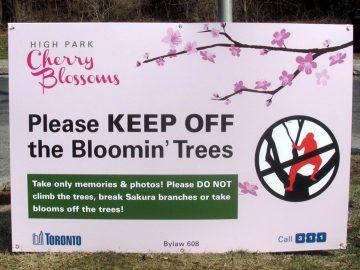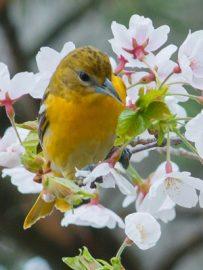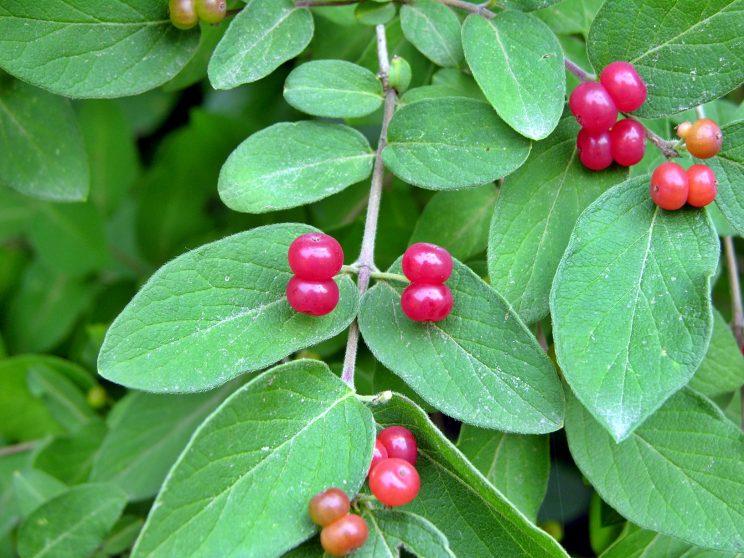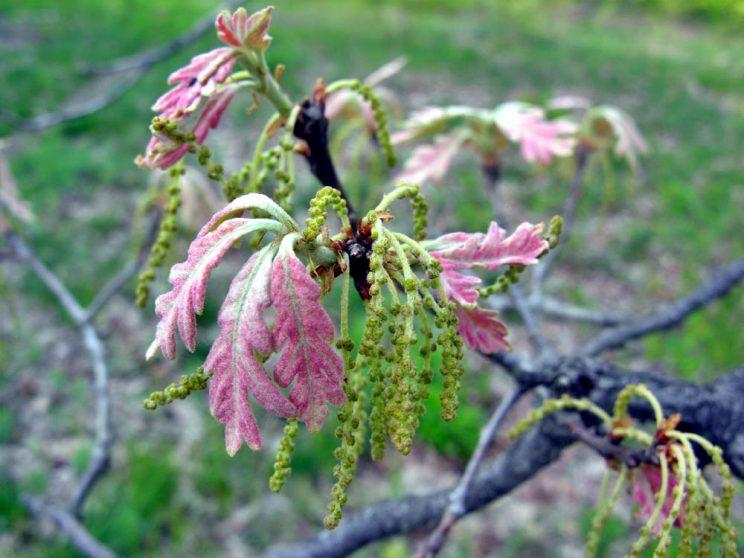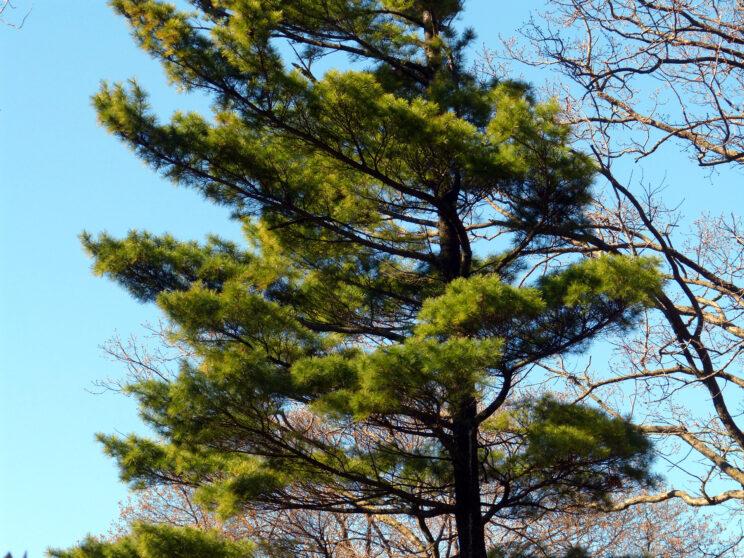by Kathleen Keefe
In the spring when you see thousands of people thronging to High Park in the manner of a zealous rock concert crowd, you can bet it is Sakura time! It’s hard to believe that a quiet delicate grove of blossoming cherry trees has the drawing power of a Blue Jays opener or the Santa Claus Parade. It’s as if the whole GTA comes to its senses for a week and realigns its priorities with nature.
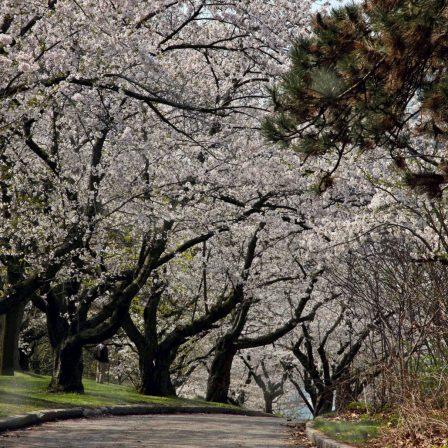
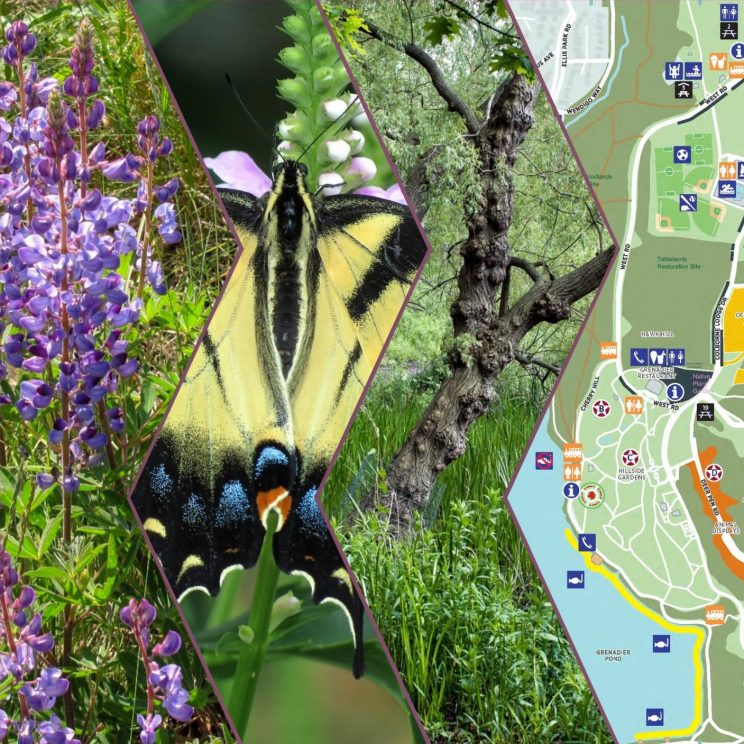
Explore High Park
A Guide to Toronto's High Park
Discover why High Park is a perfect place to explore nature right in the city! You will also get ideas for your visit and learn about park amenities, recreational facilities and volunteer opportunities.
Japan’s Tradition Grows in High Park
The ritual of Sakura (cherry blossom) Hanami (flower viewing) comes to us from Japan where it has been a tradition for over a thousand years. There, the entire country tunes into the Japanese Meteorological Society for news of the “blossom front” as it moves northward heralding the arrival of spring. The exceedingly brief and exquisite bloom is viewed as a metaphor for life: radiant and filled with beauty, yet ephemeral and fleeting. The Sakura trees are a source of great national pride and joy for Japan, and it has been their custom to give the trees as international friendship gifts.
In 1959 Tokyo presented Toronto with 2000 cherry trees, the largest gift of its kind following WWII. One hundred of these trees were planted in High Park on the hillside west of the Grenadier Restaurant and overlooking the pond, thus kicking off our own Sakura Hanami.
Following the Phenomenon
In early March the High Park Nature Centre begins tracking the development of the blossoms as the buds begin to turn green. They continue following the progress of the blooms until the petals fall. In Japanese tradition, 16 different stages of blossoming are identified, from bud, to peak bloom, to gentle rain of petals, ending with blizzard of flower petals.
The lasting power of the blossoms depends on the weather. In cool, dry, windless conditions, the blossoms can last a few weeks. Rain, wind and heat can shorten the show to a few days. The earliest the High Park cherry trees ever bloomed was mid-April, and the latest, mid-May. But in 2016 they did not bloom at all! An unseasonably warm winter was followed by a late sharp frost that killed the new buds.
The Ultimate Ornamental Clone
Those first hundred trees planted in 1959 were all Somei-Yoshino cherry trees. Although it is the most common flowering tree in Japan, it can never be grown from seed or found in the wild. Each one must be manually propagated by attaching cuttings from one tree to the rootstock of another. The trees are genetically identical. This variety was cultivated in Japan with the intent of bringing together in one tree the most desirable characteristics. Success is evident in this ornamental beauty of elegant shape and manageable size that produces bounteous clusters of flowers all at once before the leaves appear. It has something to offer year round with showy blossoms in spring, pleasing summer foliage, attractive yellow fall leaves, and in winter its beautiful bark takes centre stage.
The Marvel in High Park
Of course the trees are most captivating in spring when a myriad of pale delicate blossoms reassures us winter is over and the future is fresh and full of promise.
That is what brings tens of thousands of people to descend on High Park en masse. Traffic and parking became so increasingly impossible that in 2019, the City started closing the park to vehicles during the time of the cherry blossoms. Arriving by foot, bicycle, subway or streetcar are all much better ways to reach the park for this enormously popular spectacle.
Careful! Life is Hard on our Living Legacy
The life expectancy of these trees is only 30 or 40 years, but by prudent pruning of dead limbs, park staff have been able to extend the trees’ lives into their 60s. The pruning has generated some very interesting shapes in the original old trees. As long as layers of bark remain intact, these trees can live beyond a hundred years, but other care is also needed to ensure their health and survival.
Here in Toronto, the cherry trees are at their northernmost limit for survival. Although they can withstand some of the urban stressors, they are quite vulnerable to others. Soil compaction from the ever increasing foot traffic, along with high concentrations of salt from winter road maintenance endanger the health of the trees. Also, having very thin bark means these trees can be easily damaged upon contact, especially tree climbing.
Not Just a Pretty Face
Our ornamental Sakura are not native to High Park, but they do provide food and shelter for wildlife. Although the fragrance of the flowers seems faint to us humans, to pollinators it is a powerful aromatic beacon. Bees and birds heed the bidding of the blossoms and come to feed on the nectar. Just as the petals finish falling from the tree, the newly emerged leaves secrete nectar that in turn draws ants to protect the trees from hungry larvae. The arrival of the nectar-seeking ants coincides perfectly with the hatching of tent caterpillars. The ants feast on the caterpillars, defending the trees against this serious threat.
In addition to supplying nectar for ants and pollinators, the cherry trees produce hard little fruits that feed cardinals, robins and rodents. Birds find shelter in the branches and insects spend winter in the bark’s cracks and crevices. Over time, the tree trunks develop large holes where squirrels and nesting birds make homes.
Sakura Groves Forever
The first gift of 100 cherry trees to High Park in 1959 was followed by two more gifts and subsequent plantings (see below). In 1984 a grove was donated by Yariki and Midori Iwasaki and planted in the south end of the park next to the zoo parking lot across from the Adventure Playground. From 2000 to 2012, the Sakura Project, backed by prominent members of the Japanese Canadian community, donated many cherry trees of the Akebono and Fugenzo varieties that were planted by the Hillside Gardens and along Grenadier Pond. The City planted 50 additional trees in the same area in 2017 and 2018. In 2019, on the 60th anniversary of the original gift from Japan, the Government of Japan donated 17 new Sakura trees to High Park that were planted in a ceremony with Mayor John Tory presiding.
High Park’s Other Cherries
Although there is justifiably a lot of buzz about the Sakura blossoms every spring, let us not forget our own humble cherries native to High Park. The black cherry, choke cherry and pin cherry all play integral roles in High Park’s natural ecosystems, reliably producing blossoms in spring and then beautiful red fruit that attracts and nourishes wildlife.

